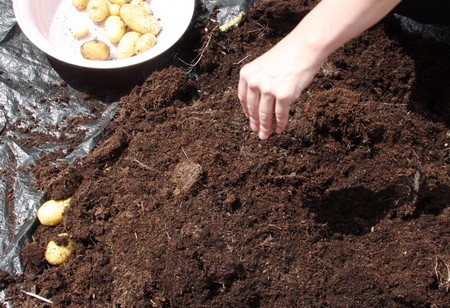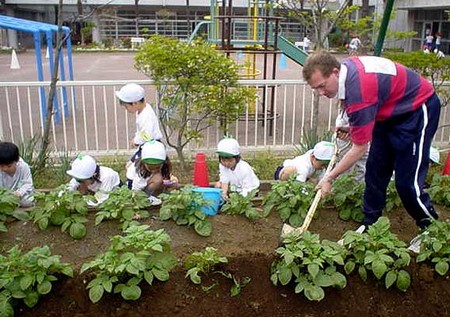Best Way to Prevent Problems When Growing Potatoes
Generally, potatoes are an easy crop, though there are a number of potential problems. Most can be prevented by a few simple precautions. Always buy certified seed potatoes. Look for the words ‘Elite’ or ‘AA’ grade on the bag. Do not save your own tubers. Follow a three- or preferably four-year crop rotation. In other words, do not grow potatoes on the same piece of land more than once every four years.
Work in plenty of organic matter on dry soil to retain moisture and help prevent scab and spraing. Control aphids, which can spread viruses, as soon as you see them. Earth up the plants to help prevent blight (if it occurs) affecting the tubers. To prevent scab, do not lime the soil the previous winter.
You may come across the following problems in some years. Blackleg is a bacterial disease that causes the leaves to roll and wilt, and the stems to blacken. It usually occurs early in the season and in dry weather. Destroy any affected plants. Blight is a serious disease of potatoes. It starts as small brown spots or blotches on the leaves from June onwards, especially in warm, wet spells. Plants may die gradually, and neighbouring potatoes and tomatoes can be infected. Spores washing into the soil will affect tubers, which will rot. Earthing up will help prevent this happening. A more drastic alternative is to cut off affected foliage to prevent spores infecting the tubers. Blight can be prevented by spraying with a copper-based fungicide (Bordeaux Mixture is acceptable to organic gardeners) or Dithane 945, before symptoms first appear. Repeat this treatment every two weeks.
Eelworms are minute worm-like creatures which attack the roots of potatoes. The first signs are weak plants that start to wilt. Reddish-brown cysts the size of a pin-head can be seen on the roots. Eelworm is very persistent. Destroy all traces of the affected crop and do not grow potatoes on that area for eight years.
Scab is caused by a fungus and is worse in light and limy soils. Plenty of organic matter, and watering during a hot summer, will help. Affected tubers can be eaten after peeling. Slugs can be a major problem on heavy and wet soil. Early varieties may be less affected, and early lifting of maincrops may help to reduce damage. If all else fails, scatter slugs pellets as you earth up, or water with a slug killer based on aluminium sulphate. Spraing is caused by a virus spread by small worms in the soil. The tubers appear normal until cut open, when brown marks are seen in the flesh. It is worse on dry, sandy soils. Destroy affected tubers and practise crop rotation.
Viruses cause the leaves to curl up or become mottled or crinkled. The plants are stunted though the tubers are not affected. Viruses are spread by aphids or are present on the seed potatoes. Always buy certified seed potatoes and spray aphids with pyrethrum or soft soap if they appear.
Volunteer potatoes is the name given to tubers left in the ground at harvest that start to grow the following spring. If you follow a crop rotation, they will inevitably come up under newly-sown crops and are then difficult to remove. It is therefore worth spending time removing every tuber, however small, at harvest time.
Categories
Advertisements
Recent Articles
 How to Understand Bed Sizes – A Small Guide
How to Understand Bed Sizes – A Small Guide How to Select Some Must Have Kitchen Accessories
How to Select Some Must Have Kitchen Accessories Best Way to Change a Car Tire
Best Way to Change a Car Tire Best Way to Write an Affirmation
Best Way to Write an Affirmation Best Way to Take Charge of Your Financial Life
Best Way to Take Charge of Your Financial Life Best Way to Survive a Party When You Don’t Know Anyone
Best Way to Survive a Party When You Don’t Know Anyone Best Way to Stop Self Sabotaging Yourself
Best Way to Stop Self Sabotaging Yourself Best Way to Start Journal Writing
Best Way to Start Journal Writing Best Way to Speak with a Powerful Voice
Best Way to Speak with a Powerful Voice Best Way to Simplify Your Life
Best Way to Simplify Your Life Best Way to Respond to a Put-Down
Best Way to Respond to a Put-Down Best Way to Reduce Acne Breakouts
Best Way to Reduce Acne Breakouts Best Way to Recover from Dining Disasters
Best Way to Recover from Dining Disasters Best Way to Quit Your Job Gracefully
Best Way to Quit Your Job Gracefully Best Way to Make Your Own Website
Best Way to Make Your Own Website



Leave a Reply